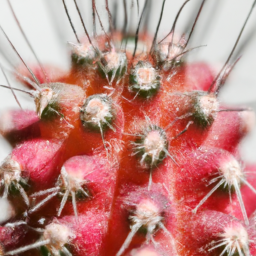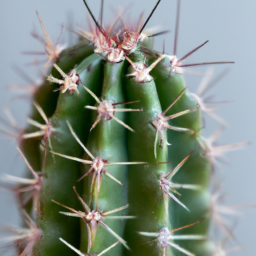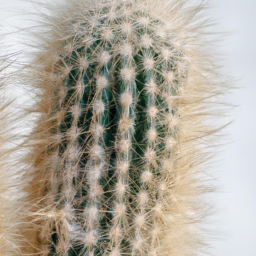
Are you looking to add some greenery to your home but don’t have a green thumb? Look no further than types of cactus house plants! Cacti are a popular choice for indoor plants due to their low maintenance and unique appearance. Whether you’re a seasoned plant parent or a beginner looking to start your indoor garden, cacti are a great option to consider. In this blog post, we’ll explore different types of cactus house plants that are perfect for adding a touch of desert vibes to your living space. Let’s dive in and discover the wonderful world of cacti!
Popular Types of Cactus House Plants
Welcome to our guide on popular types of cactus house plants! Cacti are a great addition to any indoor space, as they require minimal care and can add a touch of desert beauty to your home. In this article, we will explore some of the most popular types of cactus house plants that you can consider adding to your collection.
1. Echinocactus grusonii (Golden Barrel Cactus)
The Golden Barrel Cactus is a striking and popular choice for cactus enthusiasts. Known for its spherical shape and golden spines, this cactus can grow to impressive sizes when given the right conditions. It thrives in bright sunlight and well-draining soil, making it a great addition to any sunny spot in your home.
When caring for a Golden Barrel Cactus, be sure to water sparingly, as overwatering can lead to root rot. This cactus also benefits from occasional fertilization during the growing season to promote healthy growth. With proper care, the Golden Barrel Cactus can be a long-lasting and eye-catching addition to your indoor garden.
In terms of propagation, the Golden Barrel Cactus can be propagated from offsets or seeds. Offsets can be carefully removed and planted in a separate pot, while seeds can be sown in well-draining soil and kept moist until germination occurs. With patience and proper care, you can easily expand your collection of Golden Barrel Cacti.
2. Opuntia microdasys (Bunny Ears Cactus)
The Bunny Ears Cactus, also known as the Polka Dot Cactus, is a charming and unique cactus that is sure to capture attention. This cactus gets its name from the distinctive pads that resemble bunny ears, which are covered in fuzzy white spines. It is a relatively low-maintenance plant that can thrive in a variety of indoor conditions.
When caring for a Bunny Ears Cactus, it is important to provide bright indirect sunlight and well-draining soil. This cactus is sensitive to overwatering, so be sure to allow the soil to dry out between waterings. Additionally, the Bunny Ears Cactus benefits from occasional pruning to maintain its shape and promote healthy growth.
Propagation of the Bunny Ears Cactus can be done through cuttings, which can be taken from healthy pads and allowed to callus before planting in soil. With proper care and attention, you can easily create a thriving collection of Bunny Ears Cacti in your home.
3. Schlumbergera truncata (Christmas Cactus)
The Christmas Cactus is a popular choice for cactus enthusiasts, known for its vibrant blooms that appear around the holiday season. This cactus features flat segmented stems and colorful flowers that can range from white to pink to red. It is a relatively low-maintenance plant that can thrive in indoor environments with the right care.
When caring for a Christmas Cactus, it is important to provide bright indirect sunlight and well-draining soil. This cactus benefits from regular watering during the growing season, but it is important to allow the soil to dry out slightly between waterings. Additionally, the Christmas Cactus can benefit from occasional fertilization to promote blooming.
Propagation of the Christmas Cactus can be done through stem cuttings, which can be taken from healthy segments and planted in moist soil. With proper care and attention, you can easily propagate the Christmas Cactus and enjoy its beautiful blooms year after year.

Care Tips for Different Types of Cactus House Plants
Choosing the Right Type of Cactus
When it comes to choosing the right type of cactus house plant for your home, there are a few key factors to consider. First and foremost, think about the amount of sunlight your plant will receive. Some cacti thrive in full sun, while others prefer partial shade. Additionally, consider the size of the plant and how much space you have available. Some cacti can grow quite large, so make sure you have enough room for your chosen plant to flourish.
Once you’ve selected the perfect cactus for your home, it’s important to provide the right growing conditions. Most cacti prefer well-draining soil, so be sure to choose a potting mix specifically designed for cacti and succulents. Additionally, make sure your plant has adequate drainage holes in the bottom of its pot to prevent root rot.
Watering and Feeding Your Cactus
One of the most common mistakes people make when caring for cactus house plants is overwatering. Cacti are desert plants and are adapted to survive in arid conditions, so they don’t need to be watered as frequently as other houseplants. In general, it’s best to water your cactus sparingly, allowing the soil to dry out completely between waterings. During the winter months, when cacti are dormant, you can reduce watering even further.
In addition to proper watering, it’s important to feed your cactus house plant regularly to ensure it receives the nutrients it needs to thrive. Use a balanced, water-soluble fertilizer formulated specifically for cacti and succulents, and follow the instructions on the packaging for best results. Be careful not to over-fertilize, as this can damage your plant’s roots.
Pruning and Repotting Your Cactus
Pruning and repotting are important tasks to keep your cactus house plant healthy and looking its best. When pruning your cactus, use clean, sharp scissors or pruning shears to remove any dead or damaged stems. Additionally, you can trim back overgrown branches to promote new growth and maintain the plant’s shape.
Repotting your cactus is necessary when it outgrows its current container or when the soil becomes compacted and unable to drain properly. When repotting, choose a slightly larger pot with adequate drainage holes and fresh potting mix. Carefully remove the cactus from its old pot, gently loosen the roots, and place it in its new container, adding soil around the base to secure it in place.
In conclusion, caring for different types of cactus house plants requires attention to detail and a basic understanding of their unique needs. By following these care tips, you can ensure that your cactus thrives and adds beauty to your home for years to come.

Decorative Uses for Various Types of Cactus House Plants
Choosing the Right Cactus for Your Home
When it comes to choosing the right cactus for your home, there are a few key factors to consider. First and foremost, consider the amount of light that the cactus will receive in its new environment. Some cacti thrive in bright, direct sunlight, while others prefer indirect light. Additionally, consider the size of the cactus and how much space you have available in your home. Some cacti can grow quite large, while others stay relatively small.
One popular choice for a cactus house plant is the Echinocactus grusonii, also known as the golden barrel cactus. This striking cactus features a spherical shape and bright yellow spines, making it a visually stunning addition to any home. Another popular choice is the Opuntia microdasys, or bunny ears cactus, which features flat pads covered in tiny glochids that resemble bunny ears. This cactus is easy to care for and adds a playful touch to any space.
If you’re looking for a cactus that will add a pop of color to your home, consider the Gymnocalycium mihanovichii, also known as the moon cactus. This cactus features bright pink, orange, or yellow tops grafted onto a green base, creating a colorful and eye-catching display. Another colorful option is the Mammillaria hahniana, or old lady cactus, which features soft white spines and pink flowers that bloom in the spring.
Caring for Your Cactus House Plants
Caring for cactus house plants is relatively easy, but it’s important to follow a few key guidelines to ensure that your cactus thrives. First and foremost, make sure that your cactus is planted in well-draining soil to prevent root rot. Additionally, cacti prefer to be watered infrequently, allowing the soil to dry out completely between waterings. During the growing season, you can fertilize your cactus with a diluted cactus fertilizer to promote healthy growth.
In terms of light, most cacti prefer bright, indirect sunlight. However, some cacti, such as the golden barrel cactus, can tolerate direct sunlight. If you notice that your cactus is becoming leggy or stretching towards the light, consider moving it to a brighter location. Additionally, cacti prefer warm temperatures and do best in environments with consistent temperatures between 60-75 degrees Fahrenheit.
When it comes to repotting your cactus, it’s best to wait until the cactus has outgrown its current pot. When repotting, be sure to use a pot with drainage holes to prevent water from pooling at the bottom. Additionally, consider using a cactus-specific potting mix, which will provide the proper drainage and aeration that cacti need to thrive.
Creating a Stunning Cactus Display
When it comes to creating a stunning cactus display in your home, the possibilities are endless. Consider grouping several different types of cacti together to create a visually interesting arrangement. Mix and match cacti of varying sizes, shapes, and colors to create a dynamic display that will add a touch of desert beauty to your home.
One popular way to display cacti is in a terrarium or glass container. This allows you to create a mini desert landscape within your home, complete with sand, rocks, and other desert-inspired elements. Additionally, consider placing your cacti in decorative pots or planters to add a touch of style to your display.
Another fun way to display cactus house plants is by hanging them from the ceiling or placing them on floating shelves. This adds a unique touch to your home decor and allows you to showcase your cacti in a creative way. Additionally, consider incorporating other desert-inspired elements, such as succulents, rocks, and sand, to create a cohesive and visually appealing display.
Crisp Recap
Cactus house plants are a popular choice for adding a touch of desert charm to any indoor space. There are many different types of cactus plants that can thrive in a variety of environments, making them a versatile and low-maintenance option for plant lovers. Some popular types of cactus house plants include the prickly pear cactus, the barrel cactus, and the Christmas cactus.
Prickly pear cacti are known for their flat, paddle-shaped stems and vibrant flowers, making them a colorful addition to any room. Barrel cacti, on the other hand, have a more traditional cactus shape with ribbed stems and spines. Christmas cacti are unique in that they bloom in the winter months, adding a festive touch to your home decor. No matter what type of cactus house plant you choose, they are sure to bring a touch of nature and beauty to your indoor space.
Frequently Asked Questions from our readers:
Q1: What are some popular types of cactus house plants?
A1: Some popular types of cactus house plants include the Echinocactus grusonii (Golden Barrel Cactus), Opuntia microdasys (Bunny Ear Cactus), and Schlumbergera truncata (Christmas Cactus).
Q2: How often do cactus house plants need to be watered?
A2: Cactus house plants should be watered sparingly, typically every 2-3 weeks during the growing season (spring and summer) and even less frequently during the dormant season (fall and winter).
Q3: What kind of light do cactus house plants need?
A3: Cactus house plants thrive in bright, indirect sunlight. They should be placed near a sunny window where they can receive at least 6 hours of sunlight per day.
Q4: Do cactus house plants require special soil?
A4: Yes, cactus house plants require well-draining soil to prevent root rot. A mix of cactus potting soil and perlite or sand is ideal for promoting healthy growth.
Q5: How can I care for my cactus house plants during the winter months?
A5: During the winter months, cactus house plants should be watered even less frequently to mimic their natural dormant period. It’s also important to keep them away from cold drafts and provide additional humidity if the air in your home is dry.
Dr. Olivia Green is a botanist with over two decades of experience in indoor plant cultivation. She holds a Ph.D. in Plant Biology and has dedicated her career to researching plant behavior in controlled environments. Dr. Green is passionate about helping plant enthusiasts master the art of indoor gardening through her extensive knowledge and practical insights.


